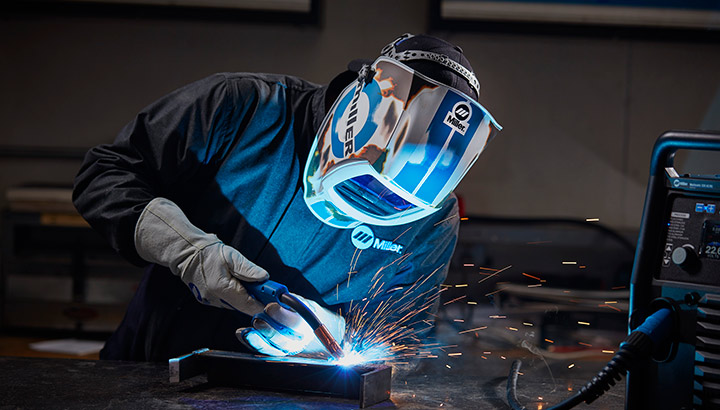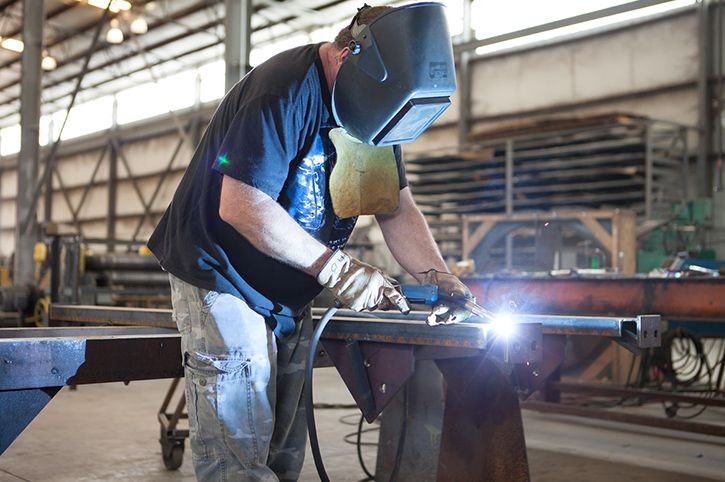Optimizing Your Welding WPS: Techniques for Improved Efficiency and Performance
Optimizing Your Welding WPS: Techniques for Improved Efficiency and Performance
Blog Article
The Ultimate Overview to Welding WPS Procedures: A Comprehensive Review for Welders
In the complex world of welding, Welding Treatment Specifications (WPS) offer as the backbone of making sure top quality, uniformity, and safety in welding procedures (welding WPS). As we dive into the numerous elements of a WPS and explore the details of certification and certification, we will reveal the vital role these procedures play in the realm of welding.
Importance of WPS Procedures
Understanding the significance of Welding Treatment Requirements (WPS) treatments is essential for making sure the high quality and integrity of welded frameworks. WPS treatments function as a roadmap for welders, outlining the necessary actions, parameters, and materials required to achieve a sound weld. By adhering to WPS standards, welders can ensure uniformity in their work, bring about reliable and structurally sound welds.
Among the key reasons that WPS procedures are essential is their duty in preserving weld quality and honesty. Adhering to the defined welding parameters and strategies detailed in the WPS helps protect against problems such as porosity, cracking, or insufficient fusion, which can compromise the strength and durability of the weld. In addition, WPS procedures are important for making sure conformity with market requirements and codes. By complying with well-known WPS guidelines, welders can demonstrate that their work satisfies the necessary demands for security and quality, supplying guarantee to clients, examiners, and regulatory bodies. In essence, the relevance of WPS procedures can not be overemphasized, as they are essential to attaining consistent, high-quality welds that fulfill sector criteria and specs.

Components of a WPS
A Welding Treatment Specification (WPS) typically consists of crucial parts that detail the details requirements for executing a weld, making certain uniformity and high quality in the welding process. The essential parts of a WPS include necessary variables such as base metals, filler steels, preheat and interpass temperature levels, welding procedures, shielding gases, welding settings, and post-weld heat therapy requirements.
Base steels describe the products being joined, while filler steels are made use of to fill up the gap in between the base steels during welding. Preheat and interpass temperatures are critical for regulating the warmth input and protecting against concerns like breaking or distortion. The welding process lays out the particular strategy to be made use of, whether it's gas steel arc welding (GMAW), shielded steel arc welding (SMAW), or another technique. Securing gases shield the weld pool from atmospheric contamination. Welding placements specify the orientations in which welding can be carried out. Post-weld warm treatment might be necessary to alleviate anxieties and improve the weld's residential properties. A thorough understanding of these elements is vital for creating a extensive and effective WPS. useful site

Qualification and Certification
Having established the vital parts of a Welding Treatment Requirements (WPS), the focus now changes in the direction of the crucial aspects check this site out of certification and accreditation in welding methods.

Certification, on the other hand, is the formal recognition of a welder's credentials by an appropriate qualification body or organization. Welding qualifications are usually based upon the certain welding processes, products, and settings a welder is certified to collaborate with. Holding a legitimate welding certification shows that a welder fulfills industry requirements and is skilled to execute welding tasks to the called for requirements.
Creating a WPS
To establish a Welding Procedure Spec (WPS) that satisfies market requirements, cautious factor to consider of welding procedures, materials, and functional specifications is necessary. The initial step in producing a WPS is to recognize the welding process to be used, such as gas metal arc welding (GMAW) or shielded steel arc welding (SMAW)

Carrying Out and Checking WPS
Upon finalizing the extensive Welding Procedure Specification (WPS) that diligently details welding procedures, materials, operational criteria, and quality control measures, the focus changes to successfully implementing and monitoring the well established procedures. Application involves making sure that all welders involved in the job know with the WPS and follow it diligently during the welding process. This calls for providing appropriate training and guidance to guarantee adherence to the specified treatments. Checking the WPS involves continuous oversight to verify that welding tasks align with the documented specifications. Evaluations, testing, and top quality control steps are necessary elements of the monitoring process to recognize any kind of issues or deviations without delay. Normal audits and evaluations of the welding procedures aid in preserving consistency and top quality throughout the job. Efficient implementation and surveillance of the WPS are important for making certain the honesty, toughness, and security of the welded joints, inevitably adding to the overall success of the welding task.
Verdict
Finally, understanding and following Welding Procedure Requirements (WPS) is important for welders to ensure top quality, uniformity, and safety and security in their work. By recognizing the parts of a WPS, obtaining appropriate credentials and accreditations, creating comprehensive procedures, and applying and checking them effectively, welders can improve their abilities and proficiency in welding methods. Following WPS treatments is important for creating high-grade welds and meeting market criteria.
In the detailed globe of welding, Welding Treatment Requirements (WPS) serve as the foundation of guaranteeing quality, consistency, and safety in welding operations. The welding process lays out the certain method visit our website to be utilized, whether it's gas steel arc welding (GMAW), protected metal arc welding (SMAW), or an additional approach.To develop a Welding Procedure Specification (WPS) that satisfies sector standards, mindful factor to consider of welding procedures, products, and operational parameters is necessary. The first action in producing a WPS is to determine the welding procedure to be utilized, such as gas steel arc welding (GMAW) or secured steel arc welding (SMAW)Upon wrapping up the thorough Welding Treatment Specification (WPS) that carefully information welding procedures, products, operational criteria, and quality guarantee measures, the emphasis changes to effectively implementing and keeping track of the established treatments.
Report this page